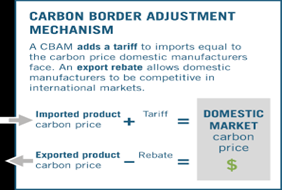IASbaba's Daily Current Affairs Analysis
Archives
(PRELIMS & MAINS Focus)
Syllabus
- Prelims –ENVIRONMENT AND ECOLOGY
Context: Recently, a new species of fish Badis limaakumi, was discovered in Nagaland.
Background:-
- Scientists have recently discovered a new fish species from the Milak River, Nagaland.
About Badis limaakumi:-
- Family: Badidae.
- Genus: Badis.
- Location: Nagaland, Northeast India.
- It was found in Nagaland’s Malak River.
- Habitat: It is found in various freshwater habitats, including rivers, ponds, and marshes.
- Distribution: These fish are primarily found in freshwater bodies across northern India, Pakistan, Bangladesh, Bhutan, and Nepal.
- Around 25 recognized species, 15 of which are in India.
- Naming: it has been named after Limaakum, assistant professor and head of the zoology department at Fazl Ali College, Nagaland.
- Unique feature: This fish can change its colour like a chameleon.
- It belongs to the often-called Chameleon fish for their ability to rapidly change colors during breeding, camouflage, or stress. (National Surveillance Programme for Aquatic Animal Diseases (NSPAAD))
- Local Names: “Tepdang” and “Sempi,”.
- Physical Features:-
- It has a large and slender body.
- It lacks blotches on its sides and fins and possesses a significant number of lateral-line scales.
- Diet: These fish are predatory by nature and primarily feed on small freshwater invertebrates. (Zebrafish)
About Milak River:
- Milak River is situated in Mokokchung district in Nagaland, India.
- The nearest town to this river is Naga Town.
- Main tributary of Milak River is Tsurong.
MUST READ: Puffer Fish
SOURCE: DOWN TO EARTH
PREVIOUS YEAR QUESTIONS
Q.1) ‘Invasive Species Specialist group’ (that develops Global Invasive Species Database) belongs to which one of the following organizations? (2023)
- The International Union for Conservation of Nature
- The United Nations Environment Programme
- The United Nations World Commission for Environment and Development
- The World Wide Fund for Nature
Q.2) Which of the following organisms ·perform the waggle dance for others of their kin to indicate the direction and the distance to a source of their food? (2023)
- Butterflies
- Dragonflies
- Honeybees
- Wasps
Syllabus
- Prelims –GEOGRAPHY
Context: High levels of cancer-causing heavy metals such as lead and chromium have been found in eight wetlands in Odisha, including the Hirakud reservoir recently.
Background:-
- The findings were recorded in a new study published in the journal Scientific Reports on September 28, 2023.
- The selected eight wetlands were: Natural ones such as Chandaneswar, Chilika, Daringbadi, and Koraput as well as constructed ones like Bhadrak, Hirakud, Talcher, and Titlagarh.
- The highest concentrations of heavy metal pollutants, lead (51.25 micrograms per gram) and chromium (266 micrograms per gram) were recorded in Hirakud.
- Heavy metal pollutants that commonly accumulate in wetlands as a result of human activity include lead, chromium, cadmium, copper, mercury, nickel, zinc, manganese, and arsenic. These metals can enter crops through the soil, which are then consumed by humans.
About Hirakud reservoir:-

IMAGE SOURCE: MapsofIndia
- Location: Odisha.
- Area: 65,400 ha
- River: Mahanadi. (Mahanadi Coalfields Ltd (MCL))
- The Hirakud reservoir is one of the largest human-made reservoirs in India.
- It is built across the Mahanadi River by a combination of earth and modern dams with a total length of almost 26 kilometers.
- The reservoir helps regulate the water level of the river.
- It thereby moderates the impact of floods in the Mahanadi Delta.
- It was designated a Ramsar site in 2021 (COP14 of Ramsar Convention on Wetlands)
- Biodiversity: It provides habitat for over 130 bird species and about 54 fish, with one classified as endangered and six others as near-threatened.
- Economic significance: 21 fish species are economically important to the region as they provide a total yield of 480 tonnes per year, supporting the livelihoods of over 7,000 fishermen.
- The reservoir also produces around 350 megawatts of hydropower.
- It also irrigates 436,000 hectares of land.
- Tourism: The rich biodiversity and other recreational activities in and around the reservoir make it a popular tourist destination, with over 30,000 tourists visiting annually.
MUST READ: National Dam Safety Authority
SOURCE: DOWN TO EARTH
PREVIOUS YEAR QUESTIONS
Q.1) Which one of the following has been constituted under the Environment (Protection) Act, 1986? (2022)
- Central Water Commission
- Central Ground Water Board
- Central Ground Water Authority
- National Water Development Agency
Q.2) Consider the following Rivers: (2021)
- Brahmani
- Nagavali
- Subarnarekha
- Vamsadhara
Which of the above rises from the Eastern Ghats?
- 1 and 2
- 2 and 4
- 3 and 4
- 1 and 3
Syllabus
- Prelims –IMPORTANT PRIZE
Context: The 2023 SASTRA Ramanujan Prize was awarded to Ruixiang Zhang of the University of California, Berkeley.
Background:-
- His fundamental work spans analytic number theory, combinatorics, Euclidean harmonic analysis, and geometry.
- The prize will be awarded at an International Conference in Number Theory on December 20-22 at SASTRA University in Kumbakonam, Ramanujan’s hometown.
About Sastra Ramanujan Prize:-
- Established in 2005.
- Instituted by: Shanmugha Arts, Science, Technology & Research Academy (SASTRA).
- Time Period: annual.
- Objective: to acknowledge and encourage exceptional achievements in mathematics.
- It is a prestigious Award in the field of mathematics.
- It promotes mathematical research and honors exceptional achievements.
- This prize is for outstanding contributions by individuals in areas of mathematics influenced by Indian mathematics great Ramanujan.
- Decoration: A cash prize of USD 10,000. (Golden Globes Award)
- Age limit: It is presented to individuals aged 32 and below.
- The age limit of 32 years is to commemorate the fact that Ramanujan accomplished a phenomenal body of work in this short span.
- SASTRA Ramanujan Prize 2023 will be awarded to Ruixiang Zhang of the University of California, Berkeley. (Padma awards)
- His fundamental work spans analytic number theory, combinatorics, Euclidean harmonic analysis, and geometry.
- Building on his doctoral thesis, he and Shaoming Guo proved a generalization of the main conjecture in Vinogradov’s mean value theorem, which is concerned with the sums of numbers raised to a certain power.
MUST READ: Chess Olympiad
SOURCE: THE HINDU
PREVIOUS YEAR QUESTIONS
Q.1) Consider the following statements in respect of the 32nd Summer Olympics: (2021)
- The official motto for this Olympics is ‘A New World’.
- Sports climbing, Surfing, Skateboarding, Karate, and Baseball are included in this.
Which of the above statements is/are correct?
- 1 only
- 2 only
- Both 1 and 2
- Neither 1 nor 2
Q.2) Consider the following statements in respect of Bharat Ratna and Padma Awards: (2021)
- Bharat Ratna and Padma Awards are titled under Article 18(1) of the Constitution of India.
- Padma Awards, which were instituted in the year 1954, were suspended only once.
- The number of Bharat Ratna Awards is restricted to a maximum of five in a particular year.
Which of the above statements is/are not correct?
- 1 and 2 only
- 2 and 3 only
- 1 and 3 only
- 1, 2 and 3
Syllabus
- Prelims –IMPORTANT AWARDS
Context: The Nobel Prize in Physics 2023 was announced recently.
About Nobel Prize in Physics 2023:-
- Awarded by: Royal Swedish Academy of Sciences.
- The 2023 Nobel Prize in Physics has been awarded to Pierre Agostini, Ferenc Krausz, and Anne L’Huillier. ( Nobel Prize In Physics 2020)
- They were awarded for their work in “experimental methods that generate attosecond pulses of light for the study of electron dynamics in matter.
- Attosecond pulses of light offer an unprecedented capability to study rapid electron movements and energy changes within atoms and molecules.
- These pulses have revolutionized the field of electrodynamics in matter.
- They provide a powerful tool for exploring fundamental processes in physics and chemistry.
- These pulses can be used to provide images of the processes inside atoms and molecules.
- They have opened new avenues for studying the behavior of electrons within atoms and molecules, revolutionizing the field of electrodynamics in matter.
- While Ferenc Kraus is a German Physicist, Anne L’Huillier is from Sweden and Pierre Agostini is an American.
- Anne L’Huillier is the fifth woman to receive the Nobel Prize in Physics.
- Significance: The laureates’ contributions have enabled the investigation of processes that are so rapid they were previously impossible to follow.
Application Potentials:-
- Blood Sample Analysis: It can revolutionize disease diagnosis, including conditions like lung cancer.
- Semiconductor Technologies: The technology can serve as a powerful imaging tool.
- Understanding Nature Processes: This can deepen our understanding of complex natural processes, particularly photosynthesis.
MUST READ: Physics Nobel Prize 2021
SOURCE: AIR
PREVIOUS YEAR QUESTIONS
Q.1) Consider the following statements in respect of the 44th Chess Olympiad, 2022: (2023)
- It was the first time that the Chess Olympiad was held in India.
- The official mascot was named Thambi.
- The trophy for the winning team in the open section is the Vera Menchik Cup.
- The trophy for the winning team in the women’s section is the Hamilton-Russell Cup.
How many of the statements given above are correct?
- Only one
- Only two
- Only three
- All four
Q.2) Consider the following statements in respect of the Laureus World Sports Award which was instituted in the year 2000: (2021)
- American golfer Tiger Woods was the first winner of this award.
- The award has been received mostly by ‘Formula One’ players so far.
- Roger Federer received this award a maximum number of times compared to others.
Which of the above statements is correct?
- 1 and 2 only
- 2 and 3 only
- 1 and 3 only
- 1, 2 and 3
Syllabus
- Prelims – IMPORTANT AWARDS
Context: The 2023 Nobel Prize for Medicine has been jointly awarded to United States scientists Katalin Kariko and Drew Weissman.
About the 2023 Nobel Prize for Medicine:-
- Katalin Kariko and Drew Weissman were awarded for work that led to effective mRNA vaccines against COVID-19.
- The discoveries and findings by Kariko and Weissman fundamentally changed the understanding of how mRNA interacts with the human immune system. (Nobel Prize in Medicine 2022)
- They eliminated critical obstacles on the way to clinical applications of mRNA, paving the way for the speedy development of mRNA vaccines that saved millions during the pandemic.
- Genetic information encoded in human DNA is transferred to messenger RNA (mRNA) in the body’s cells and is used as a template for protein production.
Using mRNA in vaccine development:-
- Scientists were able to produce mRNA without cell culture in the 1980s, in a process known as in vitro transcription.
- This began the research on using mRNA for vaccine and therapeutic purposes.
- However, in vitro transcribed mRNA was considered unstable and challenging to deliver.
- It required the development of sophisticated carrier lipid systems to encapsulate the mRNA.
- Moreover, in vitro-produced mRNA gave rise to inflammatory reactions.
- Karikó and Weissman performed an experiment to seek a remedy to this problem.
- Hypothesis: Karikó and Weissman tested whether the absence of altered bases in the in vitro transcribed RNA could explain the unwanted inflammatory reaction.
- Experiment: They produced different variants of mRNA, each with unique chemical alterations in their bases, and then delivered them to the dendritic cells.
- Findings: They found that the inflammatory response was almost abolished when base modifications were included in the mRNA.
- By this, Karikó and Weissman showed that the delivery of mRNA generated with base modifications can markedly increase protein production compared to unmodified mRNA and also reduce the inflammatory responses.
- Using this approach, two base-modified mRNA vaccines encoding the SARS-CoV-2 surface protein were developed at record speed during the outbreak of the COVID-19 pandemic.
- Protective effects of around 95 percent were reported, and both vaccines were approved as early as December 2020.
- Significance: Such vaccines have resulted in saving saved millions of lives and prevented severe disease in many more, allowing societies to open and return to normal conditions.
About DNA:-
- DNA is a deoxyribonucleic acid and is a hereditary material.
- It occurs inside the nucleus of the cell and some cell organelles.
- In plants it is present in mitochondria and plant cells.
- It is a double-stranded molecule consisting of a long chain of nucleotides.
- It stores and transfers genetic information to generate new cells and organisms.
- It has two nucleotide strands consisting of a phosphate group, five-carbon sugar (stable deoxyribose 2), and four nitrogen bases.
- The four nitrogen bases in RNA include adenine, guanine, cytosine, and thymine.
- They for complementary pairs of Adenine links to Thymine (A-T) and Cytosine links to Guanine (C-G).
- DNA is self-replicating.
- Quantity of DNA is fixed for cells.
About RNA:-
- RNA contains four bases, abbreviated A, U, G, and C, corresponding to A, T, G, and C in DNA, the letters of the genetic code.
- RNA, an abbreviation of ribonucleic acid.
- It is a type of nucleic acid that contributes to protein synthesis.
- It is synthesized from DNA when needed.
- It is single consisting of a phosphate group, a five-carbon sugar (less stable ribose), and four nitrogen bases.
- The four nitrogen bases in RNA include adenine, guanine, cytosine, and uracil.
- It replaces DNA (deoxyribonucleic acid) as a carrier of genetic codes in some viruses.
- It consists of ribose nucleotides (nitrogenous bases bound to a ribose sugar) connected by phosphodiester bonds, forming variable-length chains.
- Uracil is replaced by thymine in DNA.
- The quantity of RNA in a cell is variable.
RNA Types:-
- tRNA: it is responsible for selecting the correct protein or the amino acids that the body requires to help the ribosomes in turn.
- rRNA: it is the ribosome portion and is located within a cell’s cytoplasm, where ribosomes are found.
- It is mainly involved in the synthesis and translation of mRNA into proteins.
- mRNA – Messenger RNA: this RNA is responsible for bringing the genetic material to the ribosomes and insists on what kind of protein the body needs.
- It is therefore called messenger RNA.
- This m-RNA is usually involved in the transcription process, or during the process of protein synthesis.
MUST READ: Nobel Peace Prize 2022
SOURCE: DOWN TO EARTH
PREVIOUS YEAR QUESTIONS
Q.1) Consider the following: (2022)
- Aarogya Setu
- COWIN
- DigiLocker
- DIKSHA
Which of the above are built on top of open-source digital platforms?
- 1 and 2 only
- 2, 3 and 4 only
- 1, 3 and 4 only
- 1, 2, 3 and 4
Q.2) What is the cas9 protein that is often mentioned in the news? (2019)
- molecular scissors used in targeted gene editing.
- A biosensor used in the accurate detection of pathogens in patients.
- A gene that makes plants pest-resistant
- A herbicidal substance synthesized in generally modified crops
Syllabus
- Prelims –POLITY
Context: Recently, the Centre declared the National Liberation Front of Tripura, All Tripura Tiger Force, and their factions as unlawful associations under the Unlawful Activities (Prevention) Act.
Background:-
- The Home Ministry has banned these organizations for five years.
- The Ministry said, the government is of the opinion that the activities of NLFT and ATTF are detrimental to the sovereignty and integrity of India and that they are unlawful associations.
About the Unlawful Activities (Prevention) Act, 1967:-
- It is an anti-terror law aimed at the prevention of unlawful activity and associations in India.
- Objective: to make powers available for dealing with activities directed against the integrity and sovereignty of India.
- The Act assigns absolute power to the Central Government.
- It can declare an activity as unlawful, by way of an Official Gazette. (Misuse of UAPA)
- Applicability: Under the act, both Indian and foreign nationals can be charged.
- Punishment: The act has the death penalty and life imprisonment as the highest punishments.
- Duration of punishment: Under section 43D, police are empowered to detain the accused in police custody for 30 days and in judicial custody for a period of 180 days without the charge sheet.
- This duration can be extended further after information to the court.
- The Act empowers the Director General of the National Investigation Agency (NIA) to grant approval for the seizure or attachment of property when the case is investigated by the said agency.
- The Act empowers the officers of the NIA, of the rank of Inspector or above, to investigate cases of terrorism in addition to those conducted by the DSP or ACP or above rank officer in the state.
Recent Amendment:-
- So far the Act has been amended six times and the last one being 2019.
- The most recent amendment of the law, the Unlawful Activities (Prevention) Amendment Act, 2019 (UAPA2019).
- It has made it possible for the Union Government to designate individuals as terrorists without following any formal judicial process.
MUST READ: Terrorism & its financing
SOURCE: AIR
PREVIOUS YEAR QUESTIONS
Q.1) With reference to India, consider the following statements: (2021)
- When a prisoner makes out a sufficient case, parole cannot be denied to such prisoner because it becomes a matter of his/her right.
- State Governments have their own Prisoners Release on Parole Rules.
Which of the statements given above is/are correct?
- 1 only
- 2 only
- Both 1 and 2
- Neither 1 nor 2
Q.2) In the context of polity, which one of the following would you accept as the most appropriate definition of liberty? (2019)
- Protection against the tyranny of political rulers
- Absence of restraint
- Opportunity to do whatever one likes
- Opportunity to develop oneself fully
Carbon Border Adjustment Mechanism
Syllabus
- Mains – GS 2 (Governance) and GS 3 (Environment)
Context: Recently announced the European Union’s Carbon Border Adjustment Mechanisms likely to hurt India’s economic interests.
About Carbon Border Adjustment Mechanism (CBAM):


- A carbon border adjustment tax is a duty on imports based on the amount of carbon emissions resulting from the production of the product in question.
- For example tax on production of cement or fertilizers.
- In 2021, the European Union (EU) proposed the CBAM, which would tax very carbon-intensive items such as cement and steel beginning in 2026.
- CBAM is part of the “Fit for 55 in 2030 package”, the EU’s plan to reduce greenhouse gas emissions by at least 55% by 2030 compared to 1990 levels.
Advantages of implementing CBAM:
- Promotes decarbonisation globally: The CBAM provides an incentive for countries to reduce their carbon emissions.
- If a country wants to export steel to the EU, the policy imposes an extra cost if the steel is produced using carbon-intensive processes.
- This encourages manufacturers to adopt cleaner, less carbon-intensive methods of production.
- Prevents carbon leakage: CBAM prevents “carbon leakage”, the phenomenon where companies transfer their operations to countries with less stringent emissions regulations.
- For example, if a cement manufacturer moves from the EU to a country with fewer regulations, it might increase emissions.
- The CBAM discourages this by imposing a border tax on carbon-intensive imported goods.
- Level playing field for businesses: The CBAM helps create a level playing field between domestic businesses in the EU and foreign companies.
- CBAM ensures foreign producers are subject to a carbon cost, ensuring fairness.
- Revenue generation for climate initiatives: CBAM will generate revenue through border taxes on carbon-intensive goods.
- This can be used to fund climate initiatives or capacity-building measures in developing countries or Least Developed Countries (LDCs) if the EU decides to allocate it in this manner.
- Stimulates innovation in clean technologies: CBAM can stimulate innovation in clean technologies.
- Faced with a potential CBAM charge, industries may be motivated to invest in new technologies to reduce their carbon emissions.
- Encourages other countries to adopt carbon pricing: CBAM may encourage other countries to implement their own carbon pricing mechanisms.
- The aim is to avoid CBAM charges, as goods from countries with equivalent carbon pricing mechanisms are exempt.
- This could potentially lead to the broad adoption of carbon pricing, further facilitating global decarbonisation.
Challenges associated with the Carbon Border Adjustment Mechanism (CBAM):
- Complexity: The CBAM is a complex policy proposal that involves assessing the carbon content of imported goods, issuing certificates, and ensuring compliance with reporting and payment requirements.
- Complexity of calculating carbon content: It could be challenging to calculate the carbon content of certain products, especially if the production process involves multiple stages or takes place in countries with weaker climate policies.
- Double carbon pricing: There is a risk of double carbon pricing, where companies would be subject to carbon pricing both in the EU and in their home country.
- This could lead to increased costs for businesses and could undermine the effectiveness of the CBAM.
- Trade disputes: The CBAM is likely to face opposition from non-EU countries, who may view the policy as a form of protectionism.
Concerns before India:
- Acting as a trade barrier: With the EU’s CBAM in effect soon, India’s exports of carbon-laden products to Europe—mainly aluminium and iron-and-steel—have been burdened with green reporting rules which is a trade barrier in itself.
- This action by the EU is likely to hurt our economic interests, which explains why the government might protest it as an unfair tariff at the World Trade Organization (WTO).
- Goal of 5 trillion economy: A prerequisite for India to become a 5 trillion economy is to expand its exports and the EU is India’s third largest trading partner.
- EU accounted for €88 billion in goods trade in 2021, or 10.8% of total Indian trade.
- Uncompetitive exports: India’s products have a higher carbon intensity than its European counterparts, the carbon tariffs imposed will be proportionally higher making Indian exports substantially uncompetitive.
- May push for similar regulations worldwide: International climate policies (including CBAM) will compel other countries to impose similar regulation eventually translating to ‘a significant impact’ on India’s trading relationships and balance of payments.
Way Forward: Suggestive measures
- Minimising Impact: Indian exporters must factor in CBT into their costing and prepare to minimise its impact as it will affect lakhs of small and big firms.
- Focusing on greener production options: The rate of CBT depends on how much carbon has been emitted during production to make the export product.
- So, there is a need to explore greener production options for the production of the concerned commodities.
- Using power generated from renewable energy: This will immediately lower the carbon load, fossil fuels like coal, oil, or natural gas cause 75 per cent of global carbon dioxide emissions.
- Wind, solar and green hydrogen are current options but switching to new technology is expensive and may only be feasible in some cases.
- Sharing emission data: Indian exporters of steel, aluminium, cement, fertiliser, hydrogen, and electricity will need to share precise emission data with the counterpart EU importers, who will share the data with the CBT authorities.
- Scientifically capturing this data will need the help of energy auditors.
Source: THB
Syllabus
- Mains – GS 2 (Polity and Governance)
Context: The Law Commission has recently recommended allowing the filing of online first information reports (e-FIRs) for cognisable offences to overcome difficulties in filing FIRs and improve police to public ratio.
About e-FIR:
- An e-FIR is the electronic version of a First Information Report.
- For filing an e-FIR, the complainant does not have to visit the police station instead they can register their complaint through a mobile app or the police’s online network.
- This initiative is being implemented partially in Delhi, Gujarat, Karnataka, Madhya Pradesh, Odisha, Rajasthan, Uttar Pradesh, and Uttarakhand.
- It only works in a non-heinous case (theft, reporting lost items and vehicle thefts).
Advantages of e-FIRs:
- Increased Accessibility: In areas with security or infrastructural issues, e-FIRs offer a convenient alternative rather than visiting a police station.
- Overcoming Reluctance: e-FIRs can mitigate the reluctance of policemen in cases of petty offences.
- Addressing Police-to-Public Ratio: It would overcome the difficulties resulting from low police to public ratio.
- Reporting crimes in real time: e-FIR would tackle the long persisting issue of delay in registration of FIRs by reporting crime in real time.
Criticisms of e-FIRs:
- Potential for Exaggeration: There’s a risk of complainants exaggerating claims, which can lead to legal complexities and discomfort for the accused.
- Thus, it requires checks and balances.
- Lack of Immediate Investigation: E-FIRs might not be suitable for cases requiring immediate investigation, such as fatal accidents or grievous hurt incidents.
- Infrastructure Constraints: Not all police stations have the necessary infrastructure to handle e-FIRs efficiently.
- There are 17,535 police stations in total, of which 628 are operating without a landline, while 285 run without wireless/mobile connection.
- The total number of computers in 17,535 police stations is 172,168.
Recommendations by the Law Commission:
- To enable the online submission of FIRs for two specific situations:
- All cognizable offenses, even when the accused is unknown.
- Cognizable offenses with a maximum punishment of three years, even when the accused is known.
- It has been partially implemented in some states but the commission has recommended expanding the facility.
- States are granted additional powers to expand the list of eligible offenses for e-FIR based on the effectiveness of the system.
- Suggested amendments span various legislations, including the Code of Criminal Procedure, 1973, Indian Evidence Act, 1872, Information Technology Act, 2000, Indian Penal Code, 1860, and other relevant laws.
- It referred to the Supreme Court’s landmark verdict in Lalita Kumari v. State of Uttar Pradesh, in which the court held that preliminary enquiry should be conducted in cases pertaining to matrimonial disputes, commercial offences, medical negligence and corruption, among others.
Source: IE
Practice MCQs
Q1) Consider the following pairs:
| Dam | River |
| 1.Kallanai Dam | Kaveri |
| 2.Indira Sagar Dam | Tapi |
| 3.Sardar Sarovar Dam | Narmada |
How many of the above pairs are correctly matched?
- Only one
- Only two
- All three
- None
Q2) Consider the following statements
Statement-I:
The m-RNA is usually involved in the transcription process.
Statement-II:
Uracil is replaced by thymine in DNA.
Which one of the following is correct in respect of the above statements?
- Both Statement-I and Statement-II are correct and Statement-II is the correct explanation for Statement-I
- Both Statement-I and Statement-II are correct and Statement-II is not the correct explanation for Statement-I
- Statement-I is correct but Statement II is incorrect
- Statement-I is incorrect but Statement II is correct
Q3) With reference to the Badis Limaakumi, consider the following statements:
- These fish are ONLY found in freshwater bodies across northeastern India.
- It has been named after Limaakum, the tribal deity of Nagaland.
- This fish can change its colour like a chameleon.
How many of the statements given above is/are correct?
- 2 only
- 1, 2 and 3 only
- 3 only
- 1 and 3 only
Mains Practice Questions
Q.1) Analyse how the European Union’s Carbon Border Adjustment Mechanism (CBAM) is likely to hurt India’s economic interests with relevant examples. (250 words)
Q.2) what do you mean by e-FIRs? What are the benefits and challenges associated with e-FIRs? Discuss recent law commission recommendations on e-FIRs. (250 words)
Comment the answers to the above questions in the comment section below!!
ANSWERS FOR ’ 3rd October 2023 – Daily Practice MCQs’ will be updated along with tomorrow’s Daily Current Affairs.st
ANSWERS FOR 2nd October – Daily Practice MCQs
Q.1) – d
Q.2) – b
Q.3) – a















